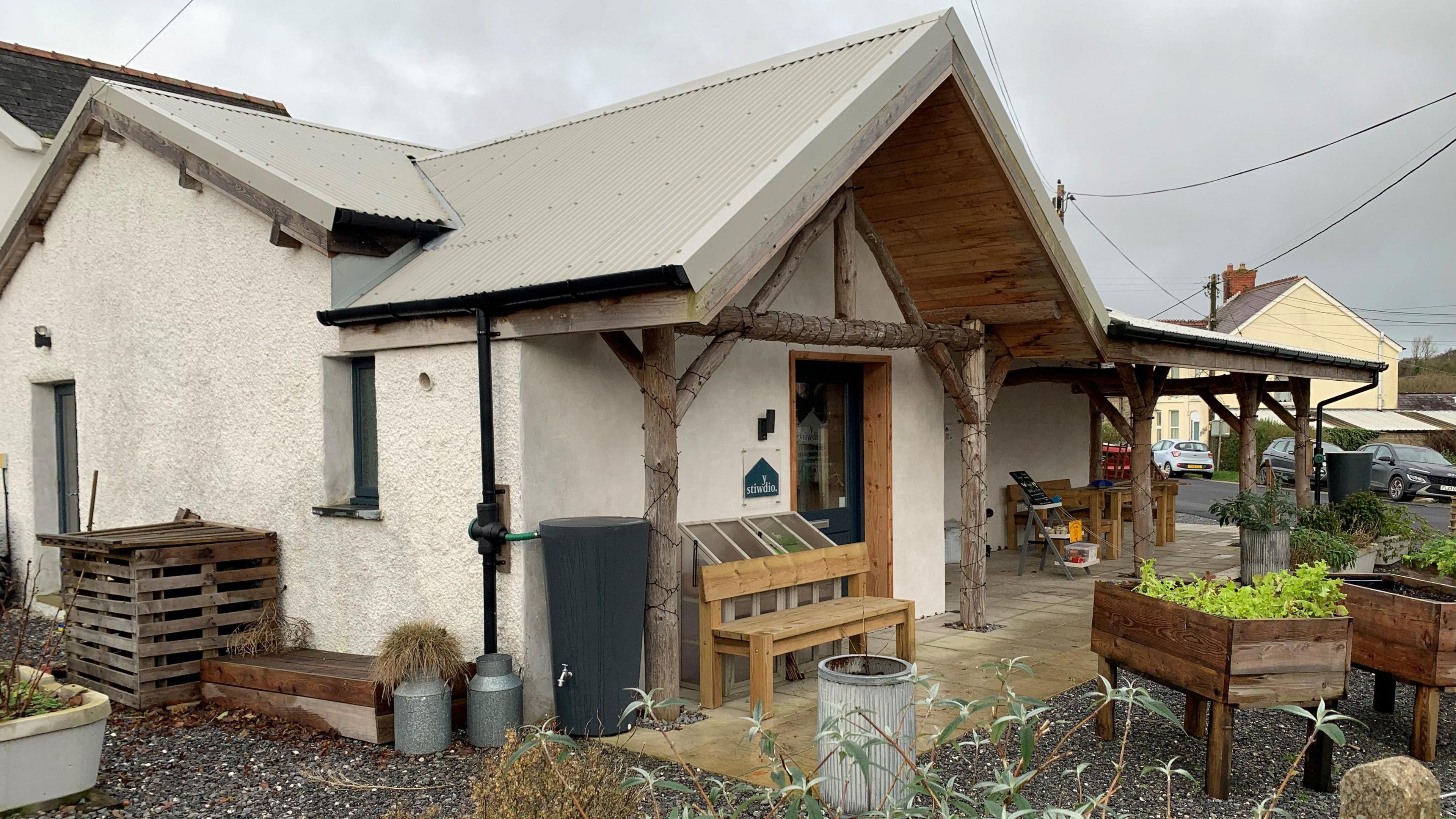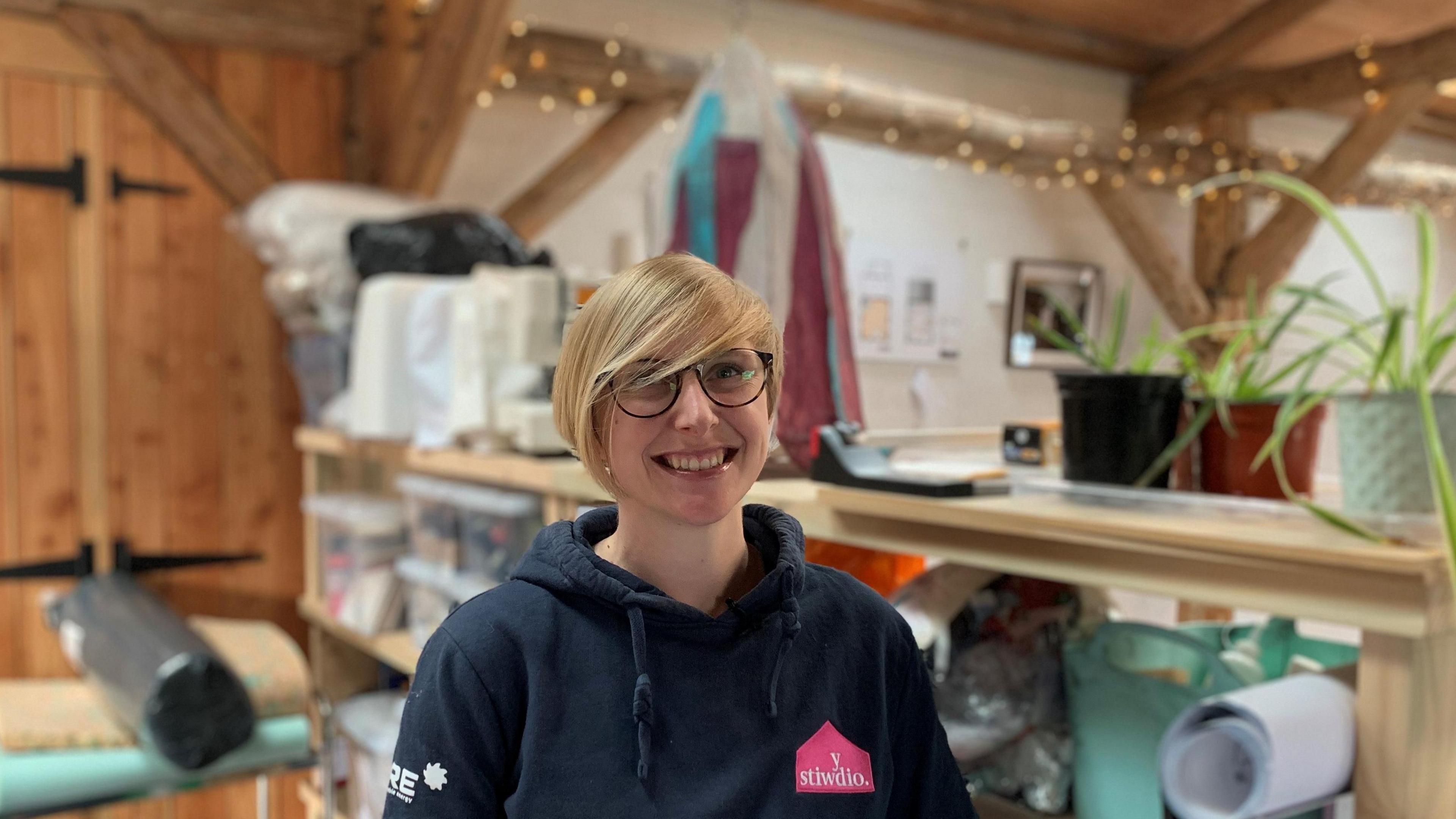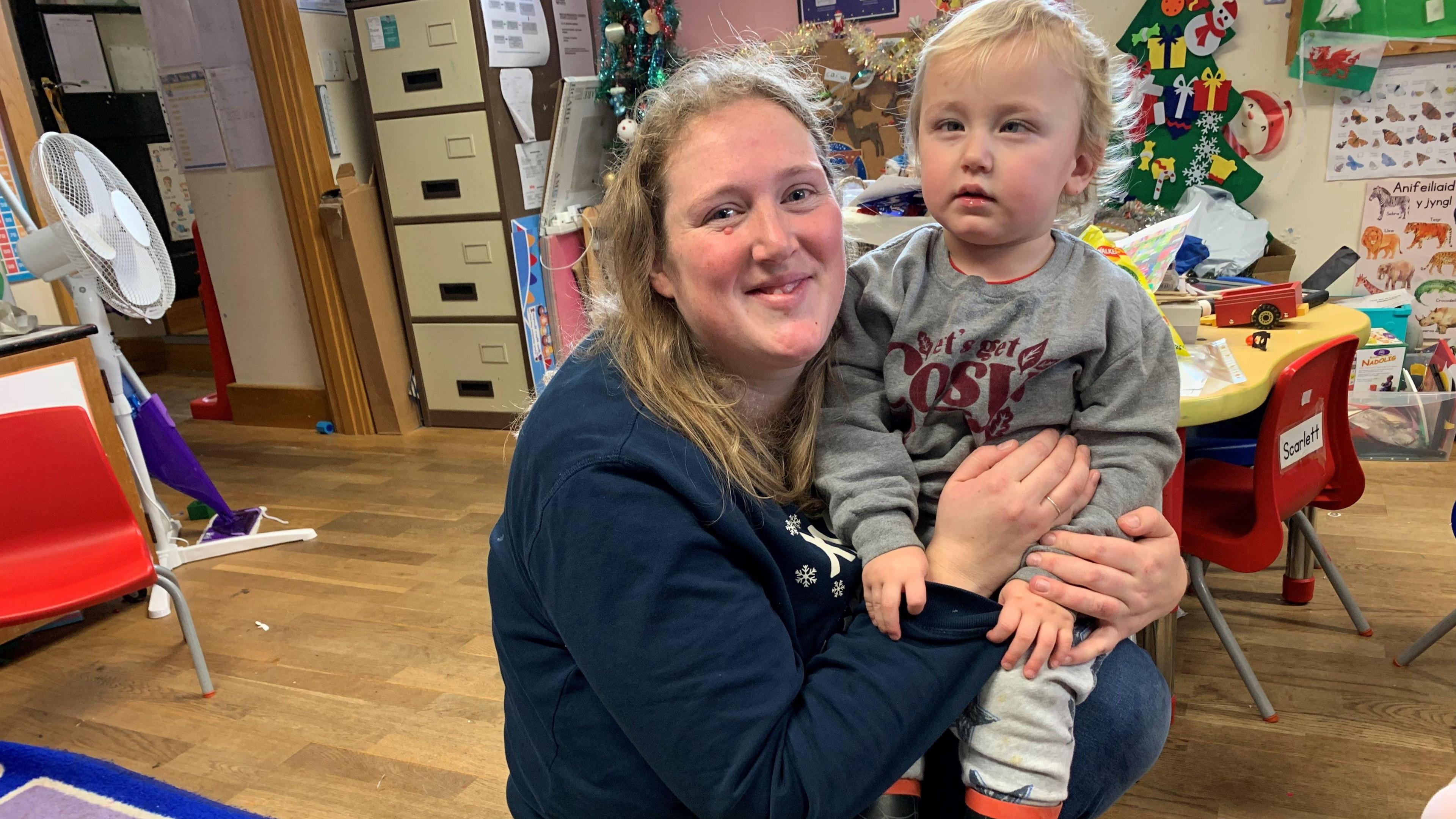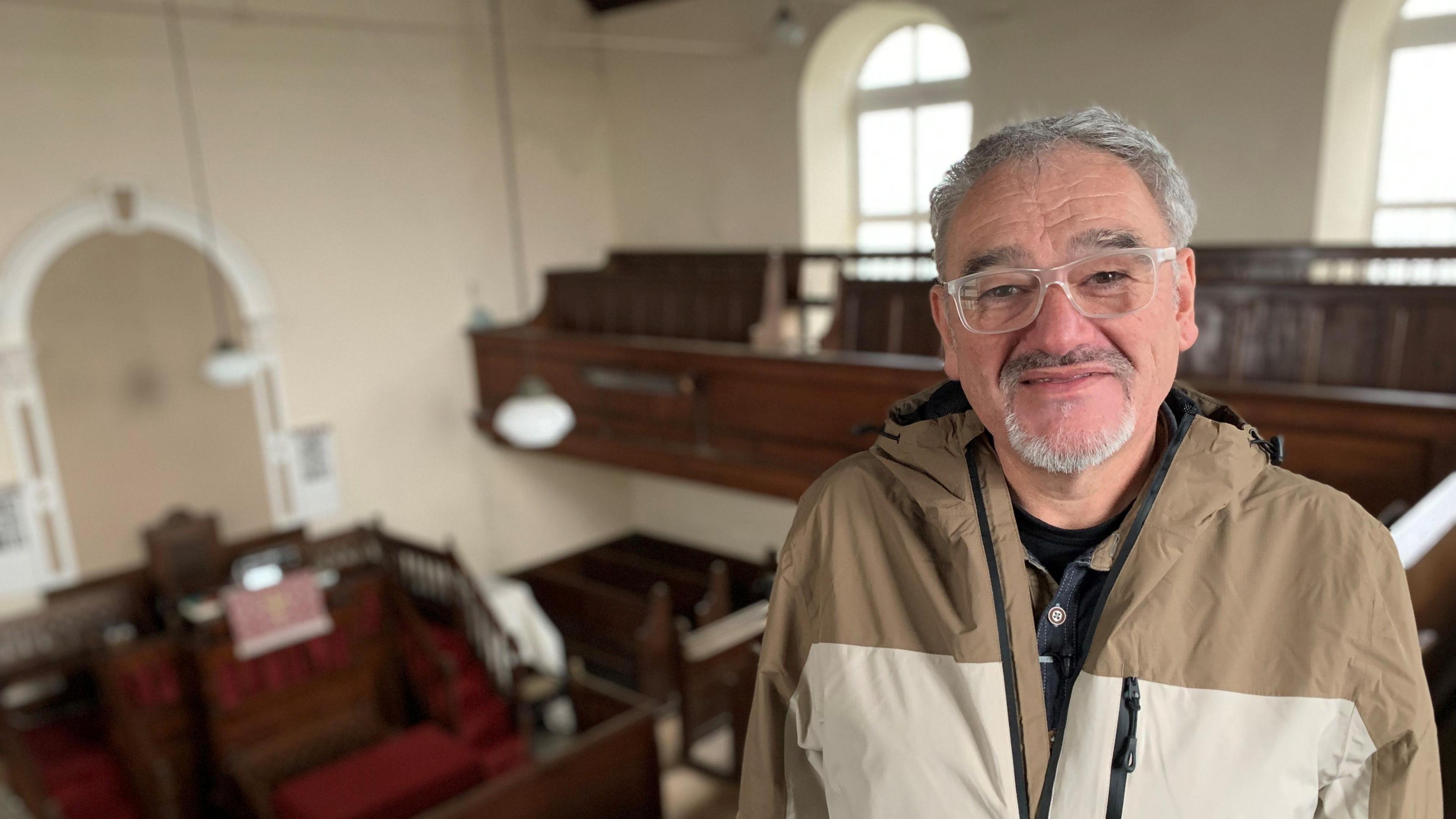Can an empty buildings network revamp communities?

Hermon's community says it has transformed old spaces which gets everyone involved in activities
- Published
Life could be breathed back into empty buildings across Wales through a "network of communities", according to a group of villagers.
Hermon in north Pembrokeshire has seen its abandoned buildings transformed into spaces for community and creativity.
Resident Cris Tomos has helped drive the campaign to invent new uses for old spaces.
He said it could become a blueprint for a national network, where communities learn from each other.
Use old buildings to fight house crisis - charity
- Published8 November 2023
Why are so many young people leaving rural Wales?
- Published22 September 2023
Up to 120,000 Welsh homes empty, figures suggest
- Published27 October 2023
The starting point for Hermon was the closure of its primary school.
Villagers fought to keep it open, even taking their battle to the High Court.
But in 2006, the school doors closed as part of the county reorganisation plans.
A huge campaign was launched to save the building and the premises were bought for £120,000 in 2008, with money raised from a combination of fundraising and grants.
The old school building was adapted and extended, and in 2013 a brand new community owned centre was opened.

Emma Baker is project manager in a creative space that used to be an empty garage and industrial plot
Canolfan Hermon has a host of facilities including a hall, kitchen, office space and is also home to a local nursery group.
Emily Morley, who attends the nursery with her two children, said: "There's something for everyone here in the Canolfan and the village, from small children like mine and all the way up.
"There's the young farmers, brownies, all sorts of organisations. It's a great community, we all know each other and help each other."
Next to the school is a building which has been adapted to the Frenni Men's Shed.
It has about nine members who meet here once a week for three hours on a Thursday to chat, socialise and join in activities, such as engineering work and carpentry.
Most of the projects are to help the community and many involve repair work.

Emily says there is something for everyone in the community centre, which used to be a school
One of its members, David Jones, said: "It brings together men of all ages and disposition.
"A lot of things have happened in the last decade and we have lost a lot of community spaces like pubs where men used to meet.
"We have lost public transport so people can't get about and it is isolated. But here we can get together, eat biscuits, drink tea, have a chat and repair things, and all we ask for is a thank you."
Just up the road is the "Stiwdio", a former garage and industrial plot transformed in to a creative space hosting events such as sustainable craft work.
Project manager Emma Baker said: "Everybody gets involved in some way and because we have so many different projects going on here there is something for everybody.
"We have people volunteering in our garden space, or helping with workshops or even making tea or coffee."

Cris Tomos would like to see Hermon become a blueprint for other communities
Mr Tomos has been one of the leaders of the effort to find new uses for old buildings.
The latest project involves the Brynmyrnach chapel in the centre of the village which closed in 2022 as a result of roof deterioration.
The community then created a heritage and housing trust to take over the building and the plan is to create affordable flats on the first floor with a Heritage Centre and pop-up café on the ground floor.
For Chris, what happens in Hermon and elsewhere could be a blueprint for a national network of ventures.
"We need to look at cost-running services and see if we can do it more efficiently locally," he said.
"In Pembrokeshire we have seen ventures such as Theatr Gwaun in Fishguard, and the swimming pool in Narberth also run by the community.
"Let's look at different ways of running things with the community leading."
Looking ahead, he said communities can learn from each other.
"Lets look at each community and have a network of communities looking at how things have developed elsewhere and could they be developed in our community."